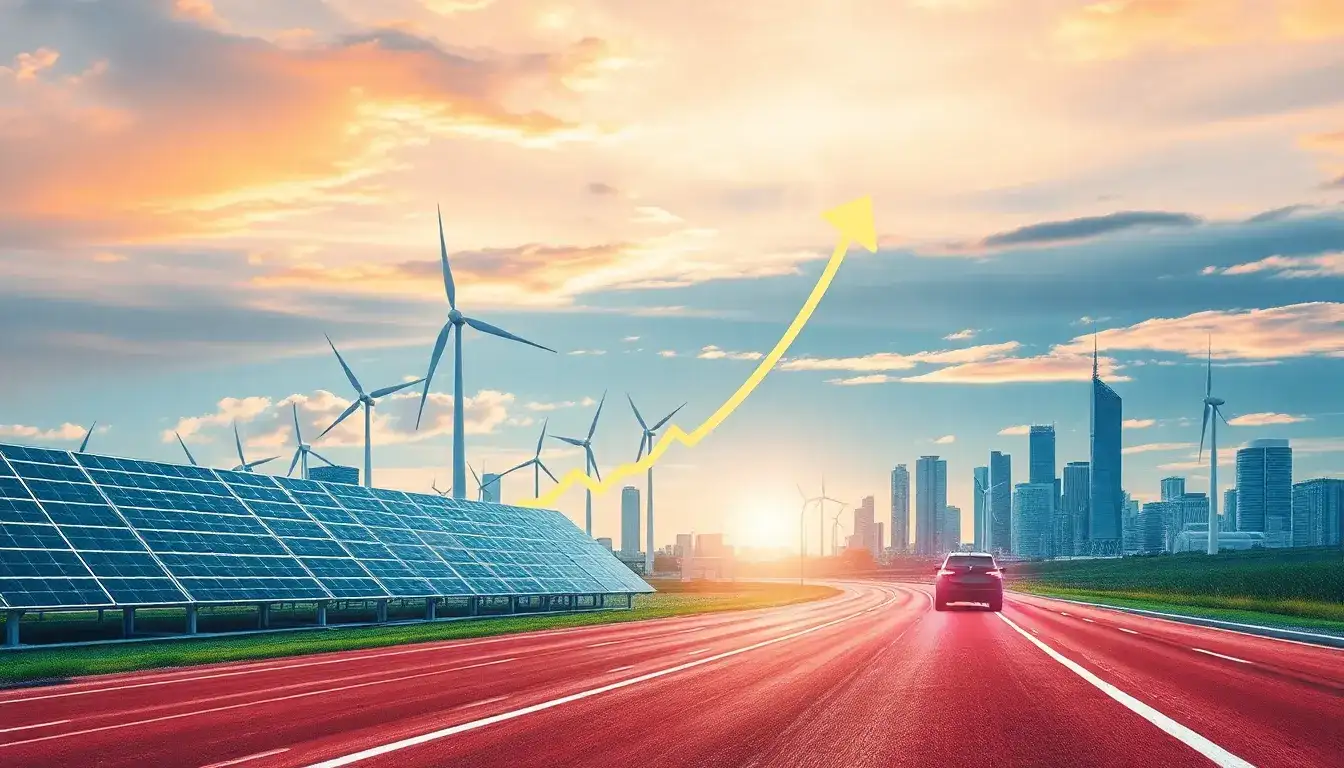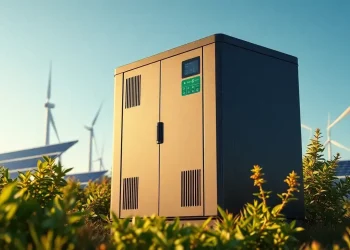
Can Sige New Energy Rewrite Energy History? An IPO in Less Than Three Years
Summary: According to the Hong Kong Stock Exchange, Sige New Energy (Shanghai) Co., Ltd. submitted its prospectus for an IPO on February 21, 2025, aiming for a listing on the Hong Kong main board. According to a report by Frost & Sullivan, this “dark horse” in energy storage, established in May 2022, achieved a remarkable 24.3% market share in the global stacked distributed solar storage integrated machine solutions within less than three years. The prospectus reveals that the company’s revenue skyrocketed from 58.3 million yuan in 2023 to 699.7 million yuan in the first three quarters of 2024, setting a record for Chinese energy storage manufacturers by reaching an annual revenue of over 100 million USD in the shortest time. However, beneath the “myth of rapid growth” in new energy, Sige’s prospectus also indicates certain losses and cash flow challenges. So, can this “fast horse” truly rewrite energy history? Here are the details:
01. Former Huawei Team Charges into the Trillion Yuan Energy Storage Market
In 2022, Xu Yingtong, recognized in the industry as a key figure behind Huawei’s rise in solar inverters and a pioneer in smart photovoltaics, founded Sige New Energy, marking the company’s entry into the energy storage sector and transitioning from solar inverters to energy storage. The core team includes President Zhang Xianmiao and software head Liu Qinwei, all hailing from Huawei, creating a dual advantage of “technology + management.” Sige New Energy focuses on renewable energy solutions. Its next-generation distributed energy storage systems (ESS) integrate AI and advanced software technology, providing smarter, safer, and scalable energy solutions for thousands of families and businesses worldwide. According to Frost & Sullivan, as of the third quarter of 2024, Sige has achieved a 24.3% market share in stacked distributed solar storage integrated machine solutions by product shipment volume, making it the fastest energy storage company to reach 100 million USD in annual revenue.
Amidst the wave of global energy transformation, the intermittent nature of solar energy generation has highlighted conflicts with grid stability. Traditional energy storage systems are often complex to install, difficult to scale, and costly. Sige has introduced the modular solar storage integrated machine, SigenStor—integrating five major components: a solar inverter, energy storage battery, DC charging module, and more—making it the most concentrated energy storage product in the industry. The prospectus shows that SigenStor is Sige New Energy’s core product, accounting for over 90% of its revenue, with sales reaching 220 MWh in the first three quarters of 2024, covering over 60 countries and regions with 99 distributors.
However, despite its high market share, the company’s heavy reliance on a single product, potential risks from international policies, and fluctuations in raw material costs present significant challenges. While SigenStor leads the global market due to its high efficiency, the continuous influx of capital and technological advancements from giants like Tesla and CATL may threaten Sige’s future market position. Furthermore, the prospectus discloses that Europe is Sige’s largest revenue source, generating 450 million yuan, or 65.1%, in the first three quarters of 2024, while Africa and the Asia-Pacific region account for 12.9% and 11.2%, respectively. Notably, the EU’s “Net-Zero Industry Act,” passed in March 2023, sets stringent targets for local production of critical raw materials, which could further squeeze profit margins for new energy manufacturers exporting to Europe. Sige’s major clients are distributors, relying heavily on this network for global marketing and sales; as of September 30, 2024, the top five clients, all distributors, accounted for 72.5% and 43.0% of total revenue during their respective periods. This dependency on major clients may impact Sige’s future bargaining power in the market. In the fiercely competitive energy storage race, can Sige’s profitability withstand these pressures?
02. Expansion Logic Behind High Revenue and Ongoing Losses
Thanks to Xu Yingtong’s background at Huawei and extensive industry experience, Sige New Energy has attracted significant interest from capital markets, completing six rounds of financing from June 2022 to January 2024, backed by major investors such as Hillhouse Capital, Huadeng International, Zhongding Capital, and Yunhui Capital. As a result of rapid expansion through multiple funding rounds, Sige’s valuation reached 4.2 billion yuan in the latest financing round in January 2024. In terms of revenue performance, Sige New Energy reported 699.7 million yuan in the first three quarters of 2024, approximately 12 times its annual revenue of 58.3 million yuan in 2023, indicating rapid growth. In 2023 and the first three quarters of 2024, Sige’s gross margins were 31.3% and 44.2%, respectively. However, despite high revenue and gross margins, the company continues to face challenges with losses. In 2022, 2023, and the first nine months of 2024, Sige recorded net losses of 76.2 million yuan, 373 million yuan, and 53.3 million yuan, respectively.
Where is the funding going? Firstly, R&D spending has been significant, with R&D expenditures of 26.2 million yuan, 193 million yuan, and 198 million yuan in 2022, 2023, and the first three quarters of 2024, respectively. The company employs over 700 people, with nearly 50% in R&D. In the prospectus, Sige states: “Due to our continuous development of products and services, marketing initiatives to enhance brand awareness, hiring more staff, expanding our customer base, and international expansion, the increase in our revenue may not be sufficient to offset the rise in expenses.” This mirrors Huawei’s commitment to substantial R&D investment. Secondly, sales and distribution expenses have increased; in 2024, the number of distributors rose to 99, with sales and distribution costs in the first three quarters of 2024 rising by approximately 80 million yuan compared to the same period in 2023. With significant investments in expanding production capacity, growing the global distributor network, and boosting end-user adoption, cash flow is under pressure. Additionally, as Sige’s SigenStor sales surge, the company is actively increasing production capacity. The prospectus indicates plans to construct a new inverter and energy storage battery production facility in Nantong, expected to commence operations in 2026, which may further strain cash flow. According to the prospectus, net cash outflows from operating activities from 2022 to the first three quarters of 2024 were 36.1 million yuan, 370 million yuan, and 200 million yuan, totaling 606 million yuan; net cash outflows from investing activities were 114 million yuan, 930 million yuan, and 236 million yuan, respectively.
03. The Rise of Distributed Energy Storage: Sige’s Strengths and Weaknesses
As global demand for renewable energy continues to rise, the installed capacity of solar photovoltaic and wind energy is growing rapidly, leading to broader applications for energy storage systems. Additionally, driven by the European energy crisis and the energy transition, demand for household distributed energy storage systems is also surging. The energy storage sector Sige New Energy operates in is considered a hot track with substantial growth potential, while the distributed market represents an important segment within the renewable energy field with high growth rates. According to Frost & Sullivan, from 2021 to 2023, global shipments of distributed solar storage integrated machine solutions increased from 0.1 GWh to 2.5 GWh. It is expected that global shipments will reach 61.9 GWh by 2029, with a compound annual growth rate of 60.9% from 2024 to 2029. However, the market for distributed solar storage integrated solutions is highly concentrated; from the first to the third quarter of 2024, the top five companies in this sector accounted for 74.5% of global shipments, with Sige New Energy ranking third. The domestic distributed energy storage market is highly competitive, with key players including Trina Solar, Kehua Data, Sungrow Power, and Dehui Co., each holding advantages in their respective fields. Nevertheless, amid the industry’s rapid development, issues such as price competition leading to performance problems, inconsistent product quality causing safety incidents, lack of inter-module coordination in power station systems, and unmet revenue expectations have emerged.
In recent years, artificial intelligence has undergone a significant transformation, enhancing its applicability and capability across various domains. As the scale of solar storage integration continues to expand, advancements in AI can greatly improve system safety, efficient scheduling, remote operation, automatic diagnostics, and comprehensive customer service. Only by deeply integrating renewable energy with artificial intelligence, addressing both hardware and software technological foundations, can the industry adapt to future developments. In the fiercely competitive solar storage sector, Sige has chosen to invest in AI and production capacity expansion, aiming to build a technological moat with “AI + modularization.” On one hand, Xu Yingtong’s previous role as President of Huawei Ascend AI Computing Business has provided him with deep insights into AI applications across different sectors, laying the groundwork for integrating AI into Sige’s future products. The company has developed an AI-enabled mobile app called mySigen, which supports real-time monitoring of the entire product range, facilitates easy device management, and offers seamless troubleshooting, providing advanced integrated solutions for smart energy management at users’ fingertips across various platforms. On the other hand, Sige is systematically expanding its production capacity. The prospectus mentions that the expected annual production capacity for inverters and energy storage batteries is 90,000 units and 1.8 GWh, respectively, with utilization rates of 73.6% and 88.3% as of September 30, 2024. In the context of intense market competition and declining industry utilization rates, can Sige maintain its dominance in the distributed solar storage sector through AI and capacity expansion?
04. Conclusion
Sige’s rapid rise demonstrates the potential of technological disruptors, having rewritten industry dynamics in less than three years, proving that modular + AI energy storage solutions possess strong product capabilities. However, the challenges faced by the company are also evident. In a capital-driven and rapidly evolving energy storage sector, how can Sige maintain its technological leadership in a market filled with giants? How can it balance rapid expansion with profitability goals? Sige New Energy’s IPO narrative represents a fierce clash between technological idealism and capital pragmatism. The upcoming chapters will reveal how many stakeholders are willing to continue supporting the growth story of new energy companies.







